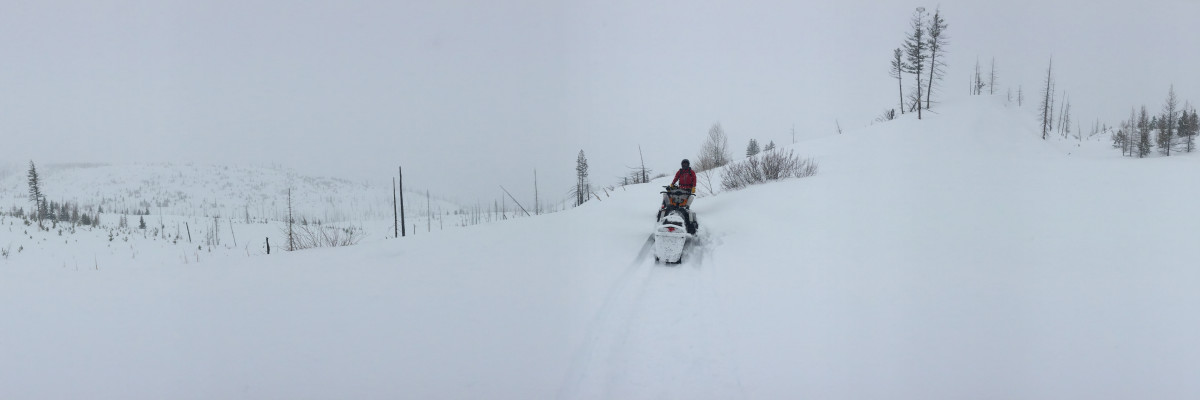The Avalanche warning has expired and the current avalanche danger is CONSIDERABLE. Natural avalanches are possible and human triggered avalanche remain likely. Cautious route finding and conservative decision making are essential for backcountry travel today.
Good morning, this is Logan King with the West Central Montana Avalanche Center’s avalanche advisory for Saturday, January 13th, 2018. This danger rating does not apply to operating ski areas, expires at midnight tonight and is the sole responsibility of the U.S. Forest Service.
Weather and Snowpack
Mountain temperatures are hovering around freezing this morning. Winds are from the WSW at 15 mph gusting to 20 mph. Light snow continued through the night and the area received an additional 2-4 inches of snow over the past 24 hours. The bulk of the snow yesterday was again focused towards the northern half of the advisory area.
Travis and I went to Seeley yesterday and found the storm slab was starting to settle and bond to the older snow surface. We received reports of avalanche activity yesterday that was failing about a foot deep with artificial triggers.
Storm slabs are the primary avalanche concern today. The majority of avalanche accidents happen within 24-48 of a storm, so be skeptical of the snow as the massive load hasn’t had the time needed to settle out yet. We are already seeing signs of bonding in the new snow but with the continued lighter snow it will require a little extra time before it’s no longer a concern. Before you commit to avalanche terrain, carefully evaluate the snow to determine if the new layer is still reactive.
Buried surface hoar will make persistent slabs the secondary concern today. With a very weak layer underneath the heavy load of new snow persistent slabs will be easily triggered if there is a persistent weak layer below the surface. The only way to determine if this layer is present is to take the time to dig a pit and identify if this layer is present. Be wary of slopes that have buried surface hoar and avoid traveling on or below them.
Winds started to develop towards the tail end of the storm creating small wind slabs in isolated pockets. We received a report of a small wind slab that was triggered yesterday. Small isolated wind slabs will continue to develop under light winds as there is plenty of snow for transport. Avoid terrain that has been wind loaded.
Avalanche and Weather Outlook
Active snow showers will continue through the morning but snow fall will be nowhere near what the last few days brought. Avalanche conditions will remain the same through the day today before stability starts to slowly improve through the weekend.
If you are out in the backcountry, please send us your observations, these are very helpful in producing the advisory. Travis will issue the next advisory on Tuesday January 16th.
Ski and ride safe.
























